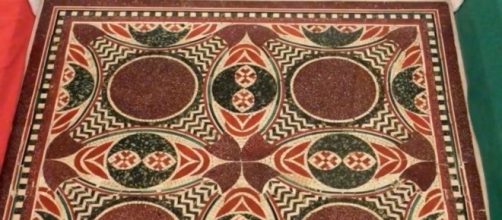An amazing discovery of ancient history has been made, as an artifact from the Roman Empire that belonged to the notorious emperor Caligula has been uncovered. However, the question regarding the find that was puzzling both Italian and American authorities involved in the matter was how such an artifact ended up in New York City of all places.
How such an item ended up in NYC
Unbeknownst to owner and antique dealer Helen Fioratti, the gorgeous coffee table that was decorating her Upper East Side Manhattan apartment was an ancient Roman artifact. Her husband Nereo, an Italian journalist, visited Italy in the 1960s.
While the couple was there they purchased it from an aristocratic Italian family, who lived on the shores of Lake Nemi.
According to NBC News, Fioratti said in a phone interview that she was told that, “It was found in the waters of the lake in the 19th century.” Fioratti also added that she did not know who originally discovered it, but said she had no reason to question its ownership when she purchased the coffee table.
What actually is the Roman artifact?
In actuality, the coffee table is really something else entirely. The Italian military police's Art Recovery Unit, whose job it is to recover looted artifacts, says that it dates back to Emperor Caligula's reign (37-41 A.D.). It is believed to have been part of the flooring on one of his two ceremonial pleasure ships.
The flooring title is an elaborate inlaid marble mosaic made of porphyry cobble laid out in a colorful geometric pattern.
The Museum of Roman Ships at Fiumicino in Rome, which houses other remnants from the ceremonial ships, describes them as “floating palaces.” The pair of ships were supposed famous for their opulence and extravagance, holding wild parties that lasted for days at a time. It is believed the two ships, which were over 230 feet (70 meters) long and 65 feet (19.8 meters) wide, eventually sank in the waters of Lake Nemi.
Could the artifact have been looted?
Most of the marble flooring was found during excavations of the shipwrecks in the late 1920s and early 1930s, They were put in the Museum of Roman Ships, which was specifically built to hold what was found.
Italian authorities believe that most of the flooring was subsequently looted from the site during and right after World War II.
However, Fioratti says that her purchase was “completely innocent.” She says it was arranged by an Italian policeman and costs thousands of dollars to buy and have shipped to New York City. The Manhattan's district attorney's office seized the piece based off of evidence provided by the Art Recovery Unit and other experts. They also said that no criminal charges have been filed against Fioratti.


